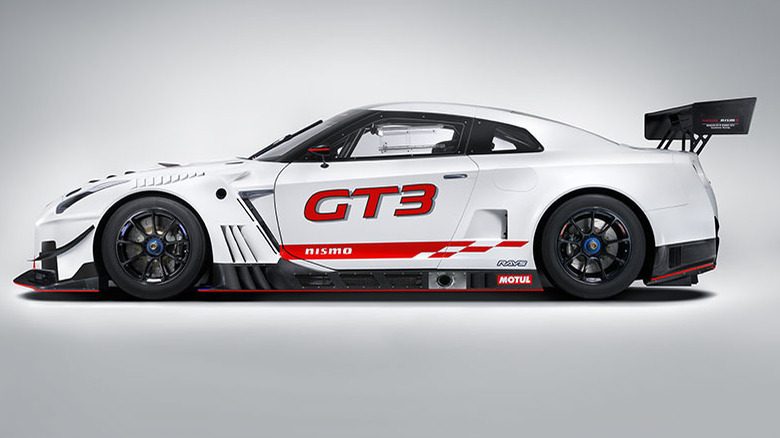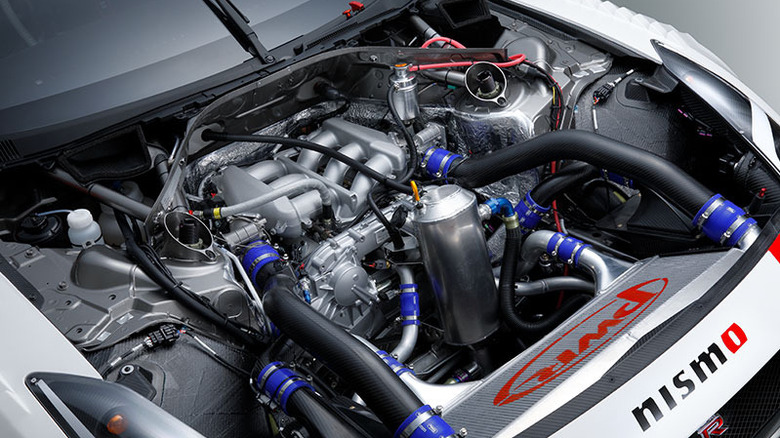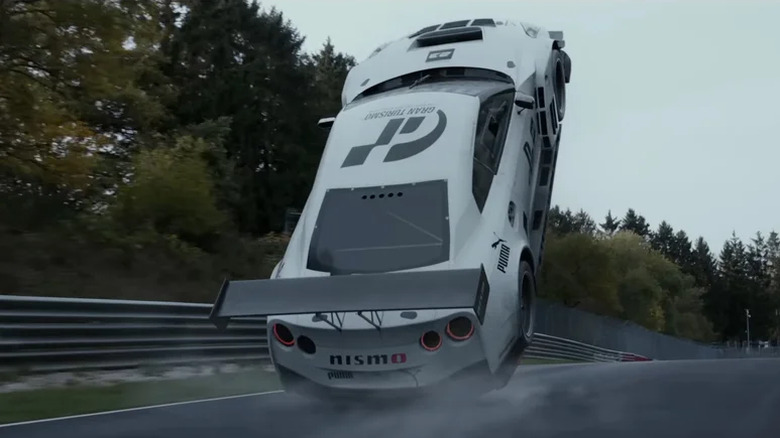Everything You Should Know About Gran Turismo's Nissan GT-R Nismo GT3
Racing film "Gran Turismo," based on the popular video game series, is set to hit cinemas on August 24. Based on a true story, the movie depicts a teenage gamer who makes the transition from mastering the popular racing game franchise to hitting the track for real. The overall plot isn't the only thing based in reality, as the upcoming racing movie also features a handful of standout racing cars, including the Nissan GT-R NISMO GT3.
Nissan's NISMO has a history of success, picking up victories at Australia's Bathurst 12-hour in 2015, and Europe's largest GT-3 racing contest Blancpain Endurance. The vehicle also completed a clean sweep of the "Super Endurance Series" in 2016, winning all six races. The GT-3 got drivers onto the podium for two consecutive races in the Japanese "SUPER GT Series," nabbing first place at Fuji and second in Thailand.
Despite not winning, the NISMO has a reputation for reliability in endurance racing; managing to finish 24-hour events held at Germany's Nurburgring and Belgium's Spa for two and three years, respectively. The NISMO GT3 is a very rare car, with only a few hundred per year being made since 2012.
The NISMO GT3 owned by GT Academy creator Darren Cox (played by Orlando Bloom in the movie) is even rarer — like its owner, it has actually competed on the track. It also appears in the movie, with title character Jann Mardenborough having taken the wheel both on the screen and in real life. Here's why this Japanese racecar is so impressive.
Weight distribution was a strong consideration
Under the hood of the Nissan GT-R NISMO GT3 sits a 3.8 liter, six-cylinder engine capable of churning out 600 horsepower, going from 0-60 in 2.9 seconds. However, the GT-R NISMO GT3 wasn't designed for the drag strip, and the Japanese carmaker has put more than just raw power into this car. A car's powertrain includes some of its heaviest components, and as a result, its placement can have a huge effect on the car's balance and handling.
The powertrain of the 2018 edition sits lower than it has in previous years, which helps weight distribution tremendously by lowering the car's center of gravity. Then engine itself sits just under six inches lower than in previous models, thanks to the adoption of a dry sump oil system, and the thin oil pan that comes with those.
The engine has also moved around six inches back towards the center of the vehicle, further improving balance and weight distribution. Nissan opted to improve the torsional rigidity of the front end, and give the suspension a look over too. All of this resulted in the car's responsiveness, stability, and agility improving.
The engine bay was reconfigured in 2018
Although some of the circuits it raced on included street sections, there is an obvious difference between how a race-focused car is engineered compared to the design of a vehicle in the average consumer's driveway. The first thing that jumps out at people when they see a true race car like the NISMO GT3 is probably the spoiler. Yes, road cars sometimes have them too, but those are for the most part cosmetic.
A racing spoiler will catch airflow when the vehicle is traveling at speed, and use it to drive the back of the car into the ground, making sure the power the vehicle is generating gets to the road instead of just spinning the wheels. The front splitter serves a similar purpose, but provides more grip for the front tires at speed instead.
The spoilers are the only spots of drag you'll really see when measuring the car's aerodynamics. Everything else has been designed to cut through the air with as little resistance as possible, while garnering a couple of other benefits. The engine, radiator, and intercooler have all been shifted around the engine bay, allowing for better airflow, while the air outlet and intake have also been modified to optimize cooling performance. The engine bay configuration also creates even more downforce, which in turn results in greater high-speed handling and stability.
The car featured in Gran Turismo had a color swap, for a very good reason
The Nissan GT-R NISMO GT3 from "Gran Turismo" was originally, and is currently, painted white — just like it came from the factory. However, the car sported an entirely different paint job for a few years, and did so for good reason. In 2015, Jann Mardenborough was involved in a tragic crash at Germany's Nürburgring which resulted in the death of a spectator.
The crash scene is a major plot point in the upcoming movie, but the events surrounding it are shifted somewhat for dramatic effect, and don't accurately portray what happened. The inclusion of the crash, and the notion it propelled Mardenborough to a podium finish, has caused controversy — though Mardenborough himself defended it by saying: "It's my life; it's part of my story."
The real crash did deeply effect Mardenborough, and is a key point in the driver's life story. During his subsequent comeback, Mardenborough's Nissan was painted black in honor of the fan that was killed in the tragic accident. The car was repainted in its original white following its retirement from racing.



